Oral Communication: Speech Act & Speech Context & Speech Style
1/34
There's no tags or description
Looks like no tags are added yet.
Name | Mastery | Learn | Test | Matching | Spaced |
|---|
No study sessions yet.
35 Terms
Speech Act Theory
Is concerned with the ways in which words can be used not only to present information but also to carry our actions. Apology, greeting, request, complaint, invitation, compliment, or refusal.
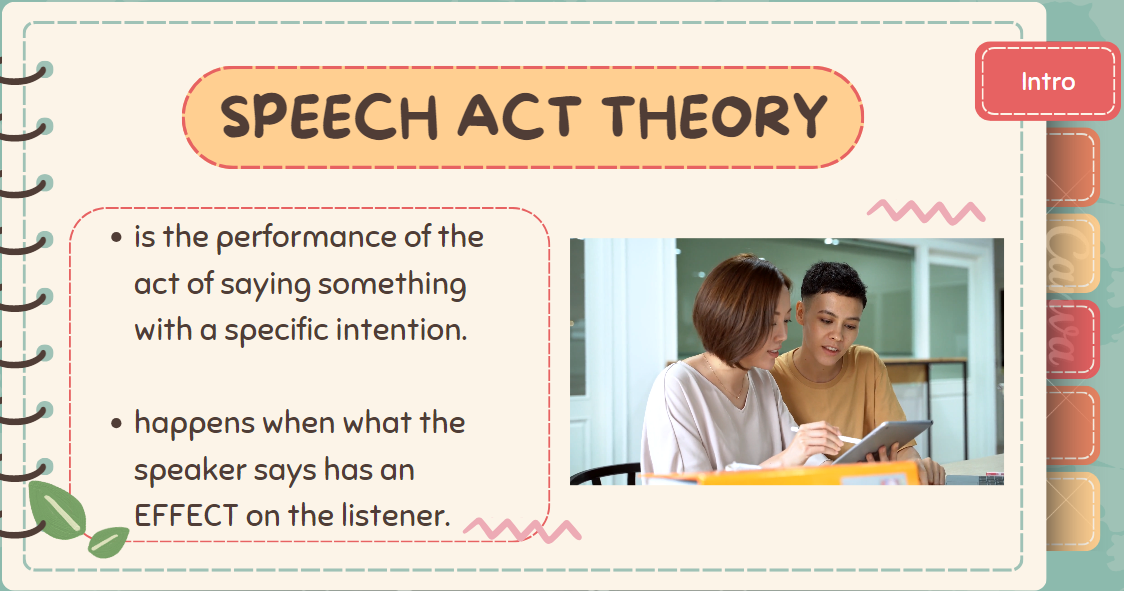
Locutionary Act - The Utterance Act
Refers to the message, the act of making a meaningful utterance. The utterance should have sense, and most importantly, should have the same meaning to both the speaker and the listener. LITERAL OR SEMANTIC MEANING
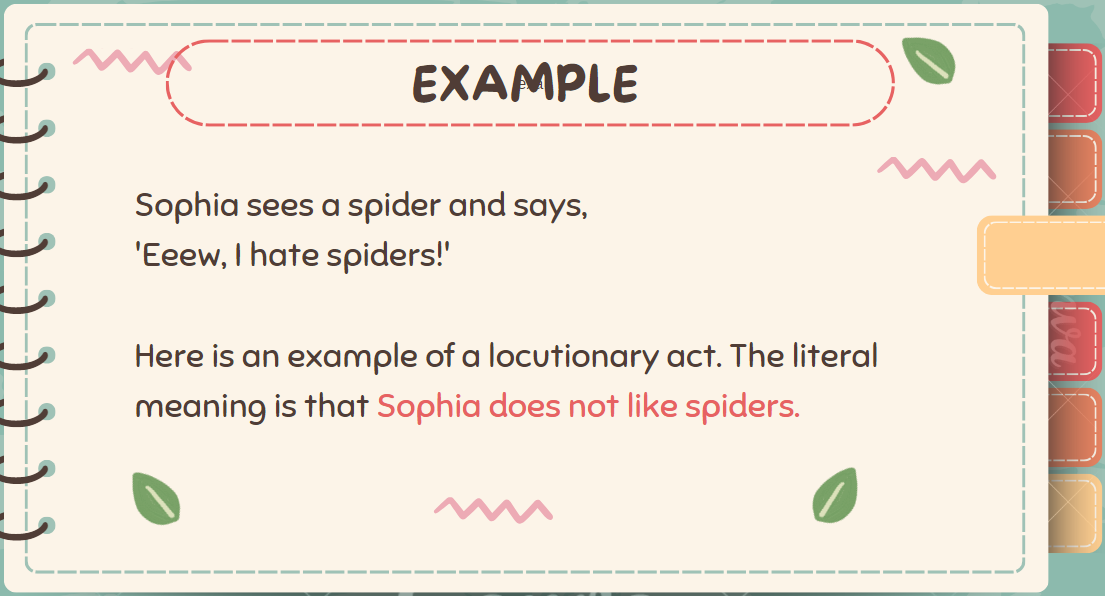
Illocutionary Act - The Intention of the Speaker
This act is not just saying something, but the act of saying something with the intention of stating an opinion, confirming, or denying something, making a prediction, a promise, issuing an order or decision, and giving advice or permission. THE INTENTION OF THE SPEAKER
Assertives
Utterances that tell how things are in the world. Ex: Statements, descriptions.
Directives
Attempt by the speaker to get the listener do something. Ex: Orders, commands.
Commissives
Commit the speaker to some future actions. Ex: Pledges, vows, oaths.
Expressives
Utterances that represents the speaker’s emotions. Ex: Thanking, apologizing, congratulating.
Declaratives
Utterances that change the world in the form of social and political transformation.
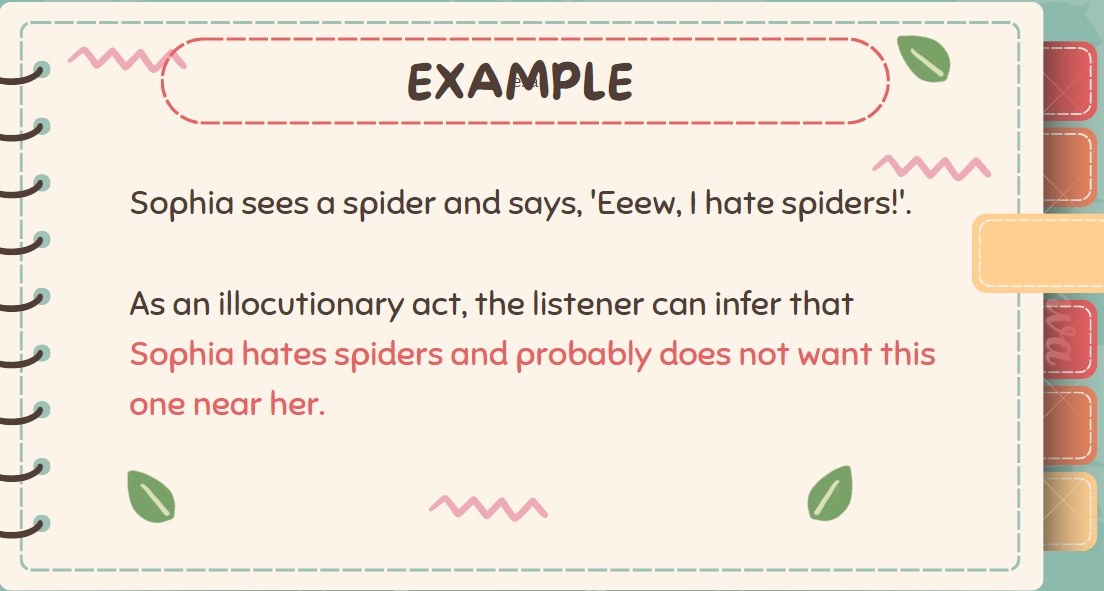
Perlocutionary Act - The Impact
This is seen when a particular effect is sought from either the speaker, the listener or both. Illocutionary Act refers to only one act while Perlocutionary Act can be multiple because there are many ways of responding to an Illocutionary Act. HOW THE MESSAGE IS PERCEIVED
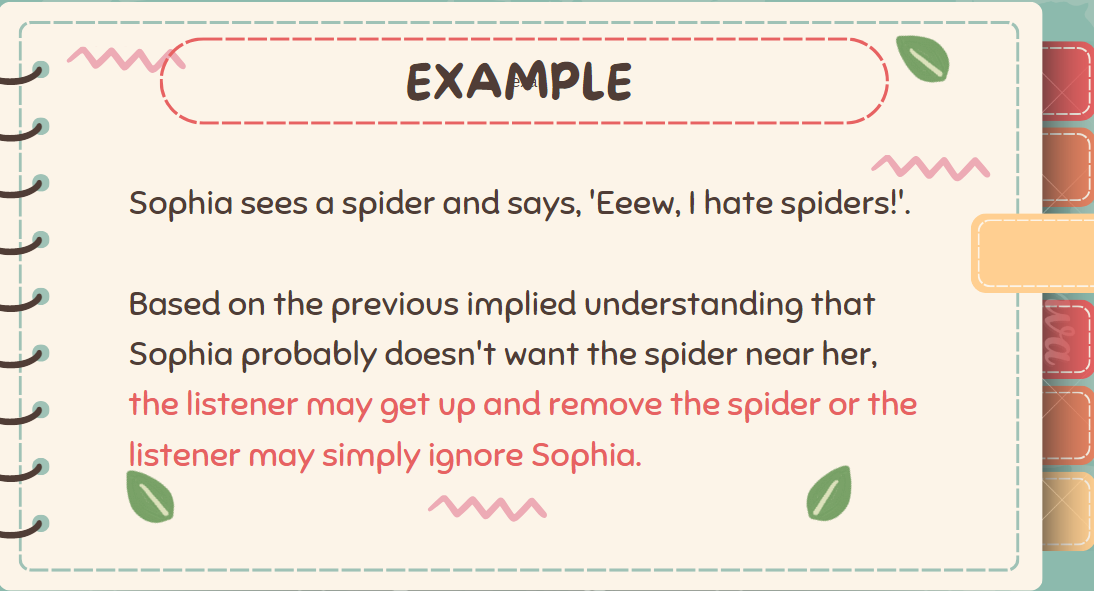
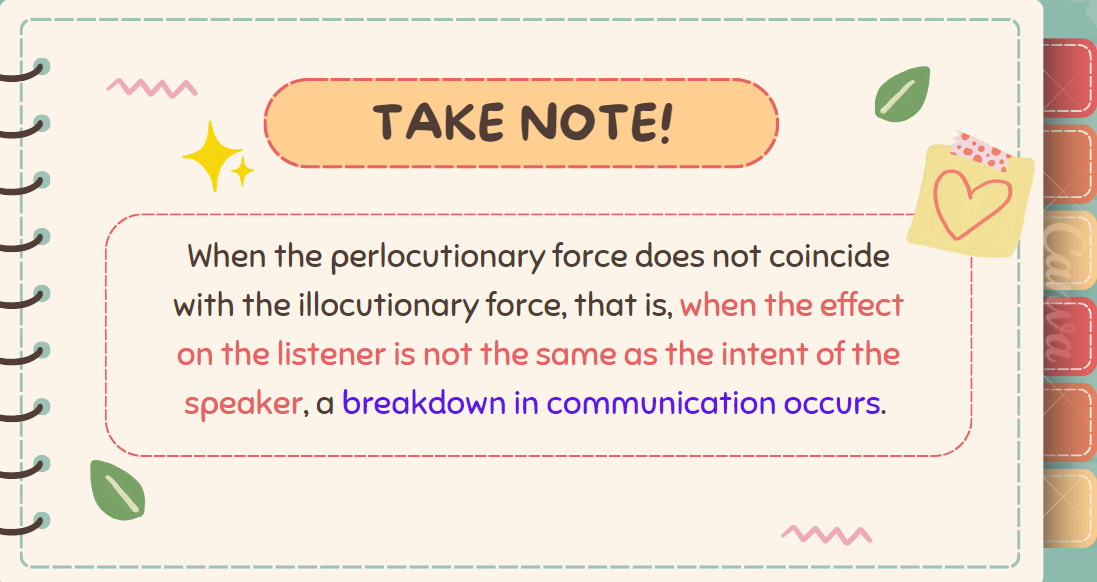
Speech Context
The environment where communication happens and how the message is relayed during the process.
Intrapersonal Communication
Intra - Within
Talking to oneself.
Doing self-reflection.
Takes place within a person. Non-verbal behavior may include smiling, frowning, doodling, scratching your head.
Self-Concept
Determines how a person sees themselves.
Perception
Focuses on how a person looks at the world.
Expectations
Messages intended for a future event.
Internal Discourse
Involves thinking, concentration and analysis.
Solo Vocal Communication
Involves talking aloud to oneself.
Solo Written Communication
Refers to writing to oneself.
Interpersonal Communication
Communicating with someone other than oneself.
The source is different from the receiver of the message.
Non-Verbal Behavior, body movement, posture, eye contact, facial expressions, changes in voice dynamics, distance and proximity.
Dyad
Two persons communicate directly with each other. Each sends a message overtly to the other.
Small Group
Comprises more than two persons who meet for two main reasons: 1. Establish relationship (Interpersonal Talk), 2. Achieve a goal (Transactional Talk).
Public Communication
A speaker delivers a message before an audience. There are two forms, public speaking and mass communication.
Public Speaking
Involves a speaker’s formal presentation of his/her speech before an audience.
Mass Communication
A type of communication to significantly large audience carried by media.
Is the transmission of information to large numbers of people through the aid of mass media technology.
Speech Style
According to Joos (1976) speech style refers to the form of language which is characterized by the degree of formality.
Intimate
It is private, non-public speech style that uses private vocabulary and includes non-verbal messages. (A secret)
Casual
Is used among friends and acquaintances that do not require background information. There are so social barriers to follow. (Chitchat)
Consultive
Is a professional discourse, does not share common experiences or meaning. (Consultation with a doctor)
Frozen
Is a formal style whose quality is static, ritualistic, and may even be archaic. (Prayers, pledges, and oaths)
Formal
Used only for imparting information, does not allow interruptions, and technical vocabulary and exact definitions. (Paper Defense)
Communicative Competence
Underlying knowledge that affect or influence communication.
Context-Specific
Relative, not absolute.
Dynamic, not static.
Grammatical Knowledge
Knowledge of the linguistic system. What is possible in a language.
Sociolinguistic
Understanding of social context, what is appropriate. When to say anything, or something.
Strategic
Strategies to compensate for limitations in our knowledge.
Discourse
Interpretation and expression of “a global meaning that is always greater than the sum.”